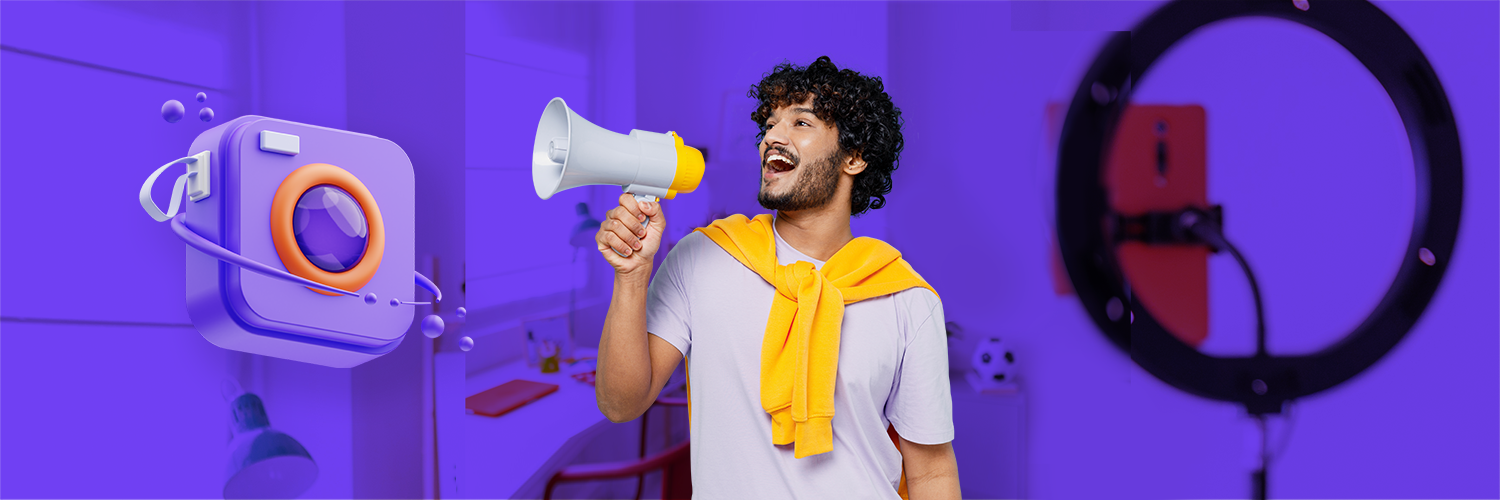


In today’s age of increasing digital connectivity, content seems to be the king. Let’s learn how to make content work commercially so that you can commercialize your passion. Content spans learning, entertainment, experiential media, recommendations, shopping, and various forms of audio-visual, written, or hybrid communication. Content includes various formats (textual, iconographic, symbolic, gesture-based) tailored to specific audiences.
The rise of social media introduced content creators to influencing opinions and integrating marketing messages across categories. Genres include leisure, travel, finance, sports, gaming, beauty, fashion, and more, offering a wide array of content possibilities.
However, while many creators want and aspire to make content work commercially, very few actually can. Every content creator dreams of earning payment for their creations and their passion. But the crunch comes when you try to monetize and earn from it.
As a content creator, if you’re unsure about monetizing your content, let’s categorize the discussion into two broad areas: 1) Intent and 2) Execution.
Consider your intent: monetize your content when dedicating yourself to it as your primary or backup career. To make your hobby or content financially supportive, it must cover your bills.
It’s natural to assume you’ll need endorsements, native advertising, online services, or subscriptions to make your content financially viable. These are some, not an exhaustive list, outlining key areas for commercial and financial success.
The second is the execution bit, where originality, personality, and creativity are the three cornerstone principles that top the method of earning you want to select. It helps keep the authenticity intact and doesn’t make you look like you are in it (just) for the money – as this can be the biggest put-off for your audience engagement!
So, what does it actually take to go big with content and make money while you’re at it? While the idea might seem daunting, you can follow some sure-shot tips to get it right – let’s begin!
If we haven’t emphasized this enough, it still is all about the idea. The conversation you want to have and the story you want to share with the world. Especially if it entails your own passion point. It should, rather we believe that it is a must. Only then will content production not become an unwanted chore.
The difference you want to create and the impact that you want to have will fall into place. Because this is where it all starts and this is how you keep going and keep churning.
You might have heard of Maya Angelou’s saying around, “people forget what you said and did, but ’they never forget how you made them feel”. With content becoming more visual and experiential every day, fueled by the accessibility and improvement in consumer technology with phone cameras improving drastically, DSLRs and GoPros becoming part of everyday vocabulary and drones no longer restricted to military tech.
The graphics revolution in games, movies, and cinemas is also adding to the notion that we live in a visual era. Creators must think content beyond just what to say but how to say it, in terms of execution itself. Focus on what you want your audience to feel, when they see a particular piece and work backwards to achieve that experience.
One key learning is to craft your content in a format that is easy to consume and watched enjoyably by your followers and prospective audience. There is no dearth of format types either and creators can choose from blog posts, videos, graphics, eBooks, podcasts or whatever creative tools of application, a creative mind can think of. But the key here is to discover the hero content format.
However, it also doesn’t mean that a creator has to stick to only one format for every piece of content created. Rather discovering the winning formula includes mix and match of various content types, to keep the audience engaged and glued to your updates. Hence, creating content in any format with a consistent, calendar-based churn rate lets your audience become accustomed and familiar with your posting frequency and align expectations.
Just to put that in perspective, a YouTube or any other platform-based podcast series might be a great promotional tactic for your content goals, but it requires a multi-format skill set, equipment-based knowledge with a persistent drive, to stick to it.
Compare that to a blog which is less resourceful and capital-intensive. Hence, choosing the content format requires commitment and then utilizing the right tools to publish and promote your content online
Content comes in many forms – videos, blogs, podcasts, reviews, and many other formats, but its success relies on your ability to adapt it to your preferred, flagship medium. One size does not fit all and it is necessary to tailor your content according to the relevant medium.
This is also very important when you try to reach out to and engage your audience; where they are. It’s also about finding the right balance between self-promotion, sharing useful information and entertainment. Facebook, Twitter, Instagram, YouTube and Snapchat are all great mediums to create and share content.
The key is to understand the medium and its requirements. Then making and tailoring content to fit the platform and its execution formats. E.g., understanding how interaction with short video formats such as reels and stories occurs in META (FB Vs Insta), then comparing it with YouTube Shorts and how to drive conversion to the main content in each.
Too many times, we jump to audience metrics of reach, frequency and engagement without understanding the content consumption behavior of the audience themselves. The key to creating successful content is to make your audience feel like you’re speaking directly to them —and for that you need to know them like an old friend.
Try to research and find their tension points, motivations, aspirations, challenges and fears. Understand their best possible outcomes, their dream solutions, and their biggest fantasies. Provide solutions and fun, just like a friend does.
Keep in mind what makes your content yours, is you. While it is important to innovate and bring in new flavors for your audience, it is sticking to what makes your content unique compared to others and don’t give up on your roots. Consistency adds authenticity and helps the audience relate to you on a personal level.
Also, if you have committed to a regular publishing schedule, like delivering a new post every Wednesday, your audience will expect to see posts published on Wednesdays – so try not to disappoint them! In case you are unable to deliver as per schedule, you can put up a small post to let them know. It is good to keep them informed.
If content is king, well so is the customer! Follow intently what your audience is saying to you and about you. Find out what they like and maybe don’t like, and try to incorporate that feedback. While you know your content best, you will be surprised at the amount of constructive feedback you can get (for free) – and it will actually help you create better content – and hey that is the ultimate goal, isn’t it?
While getting brand endorsements can be a tough task, getting on-board with your favorite or preferred brand will require more visibility and consistency! As you build your audience and repute, brands will eventually pick you up. However, the key is not to put the product or brand before your content.
The cart should not drive the horse. The idea is to showcase and integrate only the brands that align with your beliefs, audience, personality or online character. Doing so, is likely to get you noticed as brands today are always on the lookout for content creators, who can add value to their proposition. However, social media users can easily sniff out content that feels fake and will tune it out. So, like we said before, it is important to stick to your roots – be real and be genuine.
Hope you find these tips useful. Let us know if we have missed any. Also, what difficulties are you facing on the road to monetization of your content? Those will help us come up with more practical insights to address the challenges and we would love to add those to the list. Bon voyage to a great creator’s journey ahead.